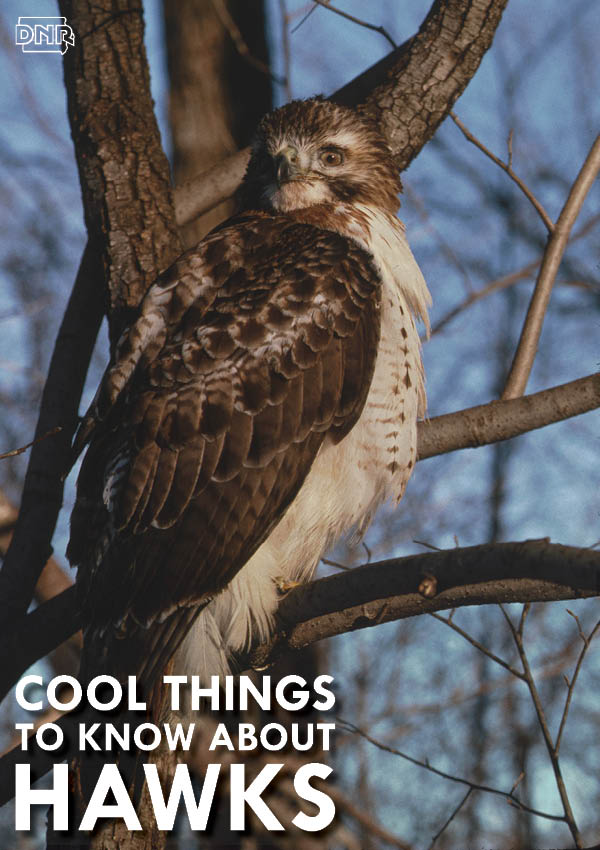 After all, Iowa is the Hawkeye state, so read on to learn about some of Iowa’s coolest raptors.
After all, Iowa is the Hawkeye state, so read on to learn about some of Iowa’s coolest raptors.
Of Iowa’s regularly nesting daytime raptors, five of these are considered to be hawks: the red-tailed hawk, northern harrier (marsh hawk), red-shouldered hawk, Cooper’s hawk and broad-winged hawk. There’s also the rough-legged hawk, the most common non-nesting hawk species in Iowa, which you can find hunting for small rodents in Iowa grasslands over the winter. There’s also the sharp-shinned and Swaison’s hawk, which can be found in Iowa, but are not regular nesters here.
Not all hawks are created equal.
The red-tailed is the most common hawk in Iowa – in fact, a few years ago two Iowa biologists identified 23 active red-tailed nests in trees along Interstate 35 from Ames to the Missouri border. However, the northern harrier, which nests on the ground in large grasslands, is on Iowa’s endangered species list. The red-shouldered hawk is threatened in Iowa, nesting primarily in bottomland forests. All hawks, not just threatened and endangered species, are protected in Iowa.
Hawks on the rise.
Once on the threatened list in Iowa, the Cooper’s hawk is now a common nesting species and a frequent visitor to urban backyards. Cooper’s hawks are fond of birdfeeders in those yards – but not for the birdseed, making for an easy meal as songbirds line up for the seed buffet. The similarities between Cooper’s hawks and sharp-shinned hawks can sometimes make identification difficult.
They all have different tastes.
Habitat needs vary for all of Iowa’s hawk species, from the northern harrier in grasslands and Swainson’s hawk in the savannas of northern and western Iowa. Even the forest dwellers have their own turf; red-shouldered hawks prefer bottomland forests, sharp-shinned hawks take to pine forests and broad-winged hawks look for trees in large forests.
They’re not the downfall of the pheasant.
While hawks and other predators may take small game, as they always have, harsh winters, wet springs and lack of habitat continue to have the largest impacts on Iowa's pheasants. Predator populations as reported by Iowa bowhunters have remained stable since 2007, but the combination of bad weather and fewer habitats likely makes what predators are around more efficient. Hawks will also eat smaller birds, snakes, reptiles, mice, fish and sometimes insects.
The better to see you with.
While hawks have remarkable hearing, their eyesight is incredible. They can see great distances and have the ability to see things 8 times clearer than humans, and all in color. And since hawks can see ultraviolet colors, they can actually see more colors than humans.
Keeping it all in the family.
While larger hawks, like the red-tailed, lay one or two eggs each year , most smaller Iowa species lay three to five, which incubate for about six weeks. It’s usually the same mom and dad year after year, but while hawks generally mate for life, that doesn’t mean that they all stay together all the time. Some hawk couples part ways after the kids are out of the nest and meet back up in the same nesting territory the next year. If one mate dies, the other usually finds a new partner soon after .
For more on Iowa birds and critters, check out our Iowa Wildlife board on Pinterest.